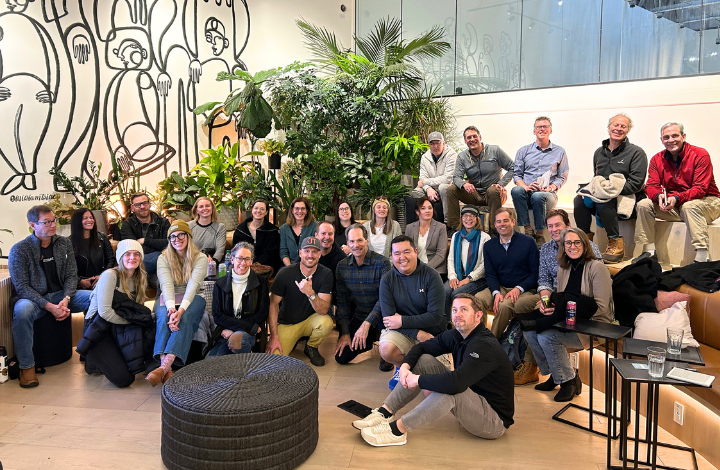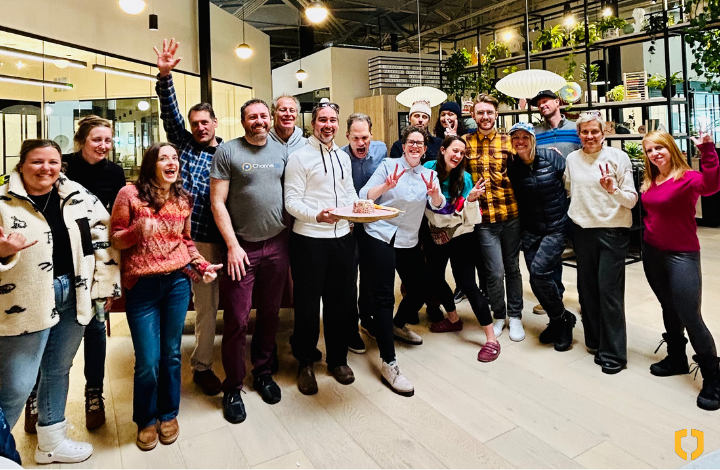
This post was originally published in 2015. It’s been updated it to reflect new ideas and suggestions.
The first time I covered a conference, I blew it.
It was a mad, stressful, three-day scramble to try and capture the whole thing. In the end, I was so muddled down in details, and had so much information, that my article ended up being a soulless play-by-play of the event.
On top of that, I hated every minute of the conference. I was frazzled and exhausted, dashing from room to room—I couldn’t wait for it to be over.
Since that terrible first experience, I’ve learned how to cover a conference, or any big event, in a more human, engaged way.
Before I share what you should do, here are two key things to avoid:
1. Don’t try to transcribe the conference
There with your laptop on your lap, eager and capable, and you start typing what the speakers are saying. Before you know it, you’re typing every word, because everything they’re saying sounds interesting and important. Stop yourself right there. There’s no way you can transcribe the conference, and who would want to read that anyway? Sit back, keep an ear out for great quotes, ideas or insights, and listen to what’s being said. If you spend the conference doing transcription duties, you’re going to miss the essence of the whole thing.
2. Don’t race from room to room
You can’t be everywhere at once, so don’t try. It’s better to come away from one good panel or presentation with deep insights than to hit three in the same hour and come away with superficial tidbits from each. Think like a reader and share valuable, interesting insights.
Now that you’re not going to be running around crazed and directionless, here are some tips to help you capture the best of the conference, avoid the time-wasters, and keep yourself sane in the process.
Pay Attention to Key and Repeating Themes
If you’re not sharing every detail with readers, what should you share? The answer is, repeating themes, big picture conversations and information that hasn’t been shared before. These are the things to be aware of and bring to readers’ attention.
Be Present and Take It All In
Conferences can be overwhelming. Practice the old wisdom and be where you are. Pay attention to what’s going on around you, ask questions, engage with people. There’s a wealth of unofficial information floating around at these events.
Prep Your Work Ahead of Time
Maybe you plan to cover whatever strikes you as interesting. That’s great. But most likely, you or your editor wants a particular angle. Do your prep work ahead of time: What angle do you want to take? What are key things you need to cover for your audience? What are you on the lookout for? Industry news? Personal insights? New ideas and innovations? Know what you’re working toward to prevent getting pulled off-track into something that isn’t going to serve you or your article.
Take Notes On the Vibe of the Event
What’s the energy like? Is it flat? Is it buzzing? What are people chatting about? All these details help paint a picture for your readers, and you don’t want to forget the interesting details. These are the things that will give your article humanness.
Participate
I like to get right in the mix at conferences. I get to know people, I participate in discussions, I host unconference sessions, I ask questions. Depending on the topic, you may have something to offer, or you may not. But if you’re open, participatory and engaged, you’ll get much more interesting information and insights than if you just sit in the corner taking notes.
Mingle and Introduce Yourself
You can learn a lot about what’s happening in an industry or movement if you talk with other participants. And bonus, you can potentially get material and ideas for future blog posts and articles.
Be Active on Social Media
I love to tweet from conferences for several reasons: it further establishes me as an involved and active person in the industry; it’s a quick and easy way to share interesting ideas; it can be a warmup to your article; and people will retweet, favorite, and follow you.
Connect with People Ahead of Time
It’s good conference practice to reach out to people ahead of time and let them know you’d like to connect. Sometimes you can get a time and placed pinned down for intros or a short interview, but even if not, it’s good to get on people’s radar, so when you introduce yourself, it’s not from out of the blue. If there are people you really need to connect with, approach them as soon as you see them. You don’t know if or when you’ll see them again and you don’t want to be freaking out the last day as you try to find them.
Use an Offline Platform for Notes
This is a biggie. Use an offline platform to take notes during the conference. I use Evernote because it’s quick, reliable and I’m used to it. Use whatever works for you, but don’t rely on conference wifi being a thing. Sometimes conference wi-fi is great, and sometimes it’s non-existent. Assume that you won’t have any. Get your prep notes in Evernote, create a note for each day, fill it in with interesting quotes, observations, thoughts, connections, etc. Then, when possible, connect with wi-fi and sync up so your notes are saved.
Scope Out the Power Outlets
If your laptop is on and unplugged, for hours on end, you’re going to run out of juice. Find out where the outlets are, and charge whenever there’s a break in the action. Don’t assume that because you’re still at 60% that everything is fine. Keep your charge up or you’ll lose it when the most interesting speaker of the day is delivering the most interesting speech.
Carry a Notebook
I generally use my laptop or my iPad with a fold-down keyboard to take notes and live Tweet conferences. But I always have my notebook with me as for several reasons: it’s easier to whip out a notebook than a laptop to jot down a quick note, you never know when a great quote on insight is going to strike, a notebook is way less disruptive if you’re in an intimate setting where people are sharing thoughts and experiences, and I’m a sketchbook nerd who rarely goes a day without writing, mindmapping or doodling something.
Be Brave
I know, I know. That hob-nobby, networking thing where everyone’s standing around with a cup in their hand kind of sucks. But, it’s one of those things that just is, so you may as well embrace it. Be brave. Go right up and introduce yourself to people. Ask them what they’re working on and their interest in the conference. Tell them what you’re doing there. You never know what connections might be made and you may walk away with a new friend.
Be Open to Chance Encounters
You know that moment when you find yourself in the elevator with the keynote speaker? By all means, say hello! That is pure gold. Ask them some questions, let them share their perspective. Get a quote or some insight. You may get a cold shoulder, but at conferences people are generally on their best, friendliest behavior. And, those quotes can add a lot of credibility to your article.
Scope Out a Seat Ahead of Time
For big conferences, scope out the venue and find a place to set up. I always sit in the back so my laptop light doesn’t disturb anyone behind me. Get in and settled early so you aren’t unzipping bags and turning things on while people are trying to listen.
Choose Your Events Wisely
You can’t be everywhere at once so determine which events you must attend. Be sure to hit the keynotes and wrap-ups. Also attend presentations by any major industry players. Be on the lookout for under-appreciated people or new topics. Sometimes the small breakout panels, presentations and discussions are where the really interesting people and information are. If you find yourself torn between two events happening at the same time, flip a coin. If the one you choose isn’t interesting, quietly sneak out and go to the other one.
Take Care of Yourself
Yes, you want to take it all in and not miss a thing, but if you’re exhausted and grumpy, you’re not doing your best work. Make sure to feed yourself, take breaks to find a quiet space to recharge (yourself and your gadgets) and take a walk if you’re overwhelmed.
These are my best tips conference coverage. Perhaps the most important thing I can tell you is to be a part of the event and enjoy it. As a reader, I’d rather read a deep dive into one great panel discussion than a light overview of everything that happened. Trust your gut, extend yourself to other people, make sure to give yourself quiet time to recharge, make the most of it, and have fun!
Coworking space operators: Subscribe to the Coworking Out Loud Newsletter to get industry insights, resources and content marketing tips delivered to your inbox.
Related Articles
We’re So Damn Lonely that the U.K. has a Minister of Loneliness to Address the Problem
Coworking Etiquette: the Ultimate Guide
Coworking for Introverts: It’s all About Recharging Our Internal Batteries





